Today, we are learning all about one-rail bank and kick shots. First, we're going to talk about the classic mirror image system. Then we're going to talk about the projection mirror system. And lastly, we're going to talk about all the factors that affect bank and kick shots. We're also going to include some examples, so you get some practice in.
Mirror System: The Classic Billiard Kick and Bank Technique
Let's get started with the mirror image system. So first little situation here, we have the cue ball two diamonds away from the red 3-ball hanging in the side pocket. So I know we covered the mirror image a little bit in the previous PoolDawg tutorial, however this time, we're going to identify every factor that affects it.
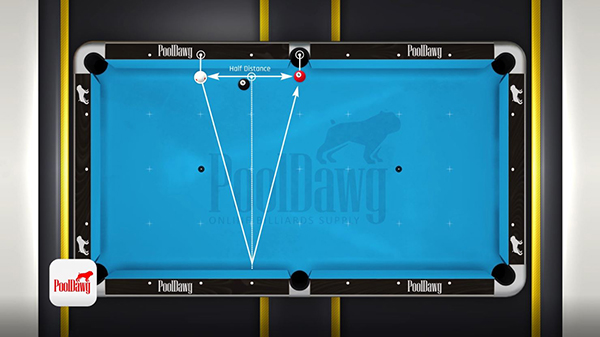
In this case, we have two diamonds in between the object ball and the cue ball. The idea is if I shoot my cue ball into the first diamond down from the side pocket on the opposite rail, I should go into the three ball if the table plays right and perfect. The idea is that if I draw a line from between the two balls to the same point on the opposite rail, my entrance angle will be the equal opposite to the exit angle. That's the theory of the one-rail banking mirror image.
It works for bank and kick shots. It's the exact same concept, works great both ways. So I'm going to shoot the cue ball into the first diamond, as I mentioned, and I'm going to see what happens.
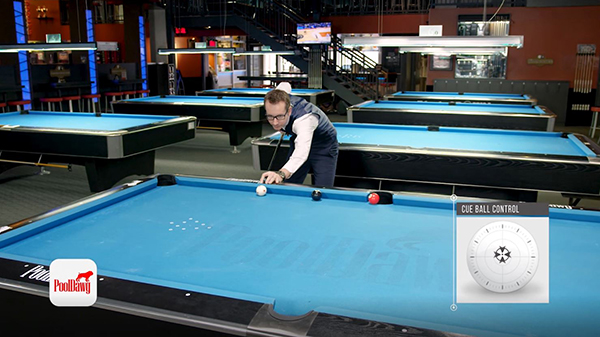
There we go. Okay, so as you can see, this one is straight in. No problem.
Let's say I move this ball father down now In this case we have one, two, three diamond distance.
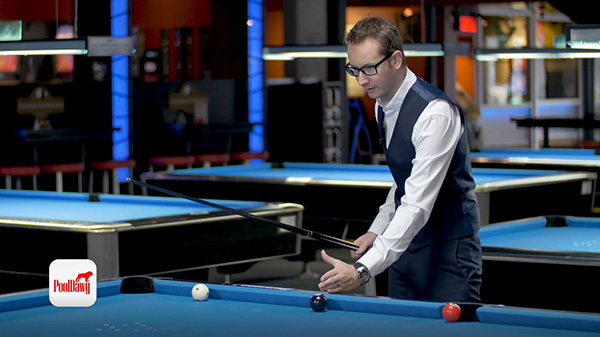

So I'm going to find the middle, which is one and a half diamonds, which should be right there. Okay, so again, if I talk about the angles, the angle going in should be the same as the angle going out. The good thing with this system is that it’s easy to use because you can just find the half-way point and it's really not that bad to visualize. You can just look at your points, once you have it, just look at it and shoot.
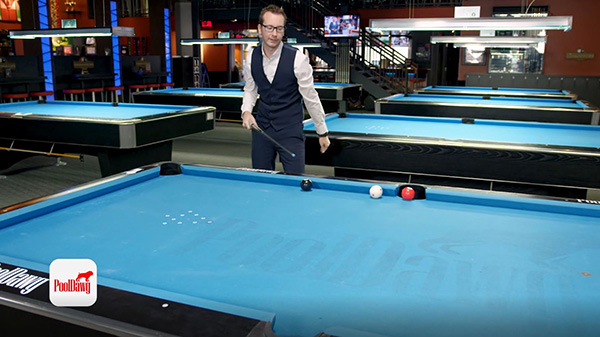
*misses shot
Mirror Kicking & Banking Systems Adjustments for Pool Table Conditions
Okay, so this is sort of where I was trying to go because I tested the table a little bit before and I knew the table plays short simply because outside today it’s pretty cold, pretty humid, and we haven't had time to actually clean the balls (dirty equipment), nor the table. So that said, now I'm able to identify that the table is going to play short, and it played quite short.
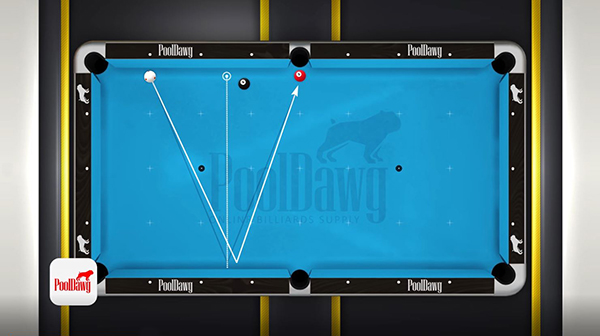
In order to adjust for a table playing “short” or “long”, you must take a look at the angle and the table conditions. With the first shot I didn't have to adjust because it was a pretty small angle and the smaller the angle, the less table conditions are going to affect it. But the wider your angle is going to be, the more conditions are going to affect it. I'm not going to aim at the center point, but rather here, farther up the rail, because I know the table plays short. There you go, it fell in.
Okay, so far this is all pretty easy because we have the balls on the rail and it's pretty simple to identify how to aim. It gets harder whenever the balls aren’t even with each other but this really isn't much of an issue either, it's just harder to visualize.
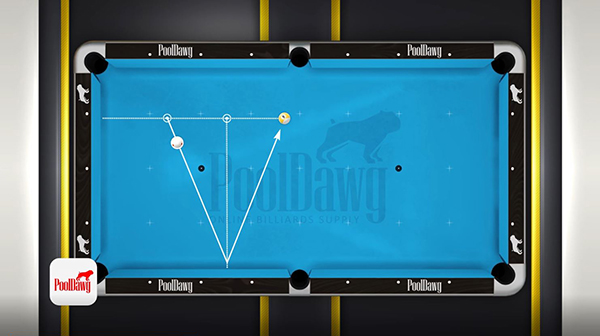
So basically once again, you've got to find the middle in between those, but now you're going to have to project this ball on the same line. I like to project them on the horizontal line, parallel to the long rail. So if I go here, even to the object ball, and then I try to find the middle I will know where to aim. Because the angle that's enter is pretty much equal opposite of the one that exits you can find the same thing, no matter what, anywhere on the table.
It doesn't mean I'm going to make it, but I'll try to at least touch it. There we go. And that's pretty much the basics of banking and kicking with using the mirror system.
The Mirror Projection System for Kicking and Banking
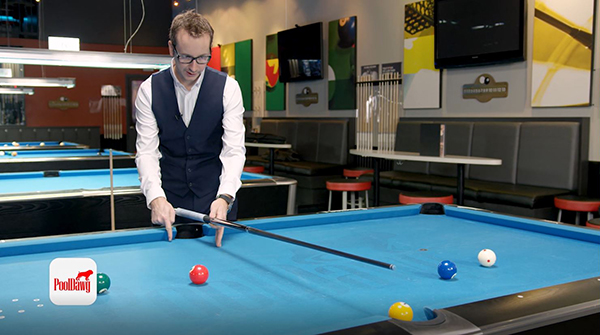
The second method here is what we call the mirror projection image system. So again, we have the cue ball here. We're going to kick one-rail into the one ball, so we could use the same first system. However, I'm going to use another common thing that a lot of players, and especially top players, use as well.
What we're going to do is we're going to try to take the distance from the one ball to the groove, here. This is called the channel, where the object ball would roll along the rail. You usually can see if the table is tired, there will be a little white line, something a little dirty under the point of the rail. It's pretty easy to identify it. So again, I'm going to come back to here center of the target.
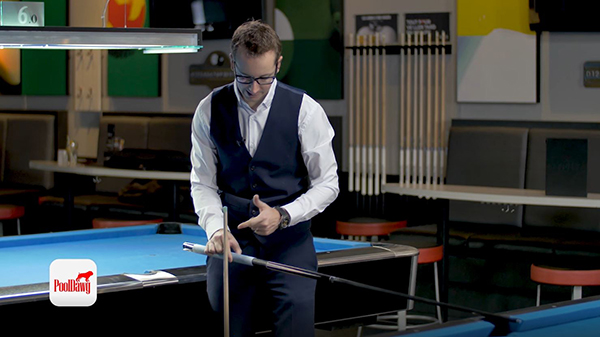
Okay, my tip is out there in the channel. I'm going to take that distance, make sure it's there. Then from there, all I'm going to do is go behind me in a straight line, the tip on the channel here into our point of aim in space. So we did set up that jump cue right before, so it's easily to visualize, and it's perfectly in the place. This is basically the distance; this is the focus point you're going to go to in order to make the system work.
The beauty of it is every time you're going to shoot the cue ball, all you got to do is aim into the jump cue and it will go and bank in the side pocket. That works if I were to straight kick with the two, the three, the four, the five, and even bank the six out there. Either way, it will be the same aiming point. So what I'm going to do is I'm going to go ahead and I'm going to shoot an example here, shoot that one ball into the side, aiming into the cue out there.
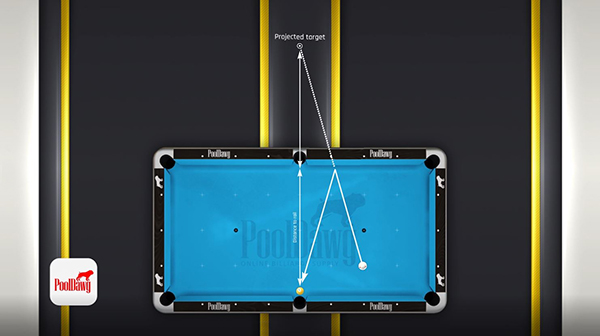
Okay, now the big disadvantage of that system is when there's a lot of space around the table. If you're playing at home, usually you got walls everywhere, it's pretty good. If you're playing in a pool hall that's not as high standing as this one, maybe the tables could be a little closer to each other. You might be able to find the spots on the table itself. However, this one, the tables are pretty far apart. As you can see, there are quite some gaps. So in my case, if I remove the jump cue here, I'm basically aiming in space. This is an empty space and I have to find that spot, and it's not very easy to visualize. It's not something you can just find out pretty precisely. And unfortunately, this is the big drawback of the system.
Otherwise this is an absolutely great system and it works from everywhere. As an example, I'm going to show you, we're going to make all the balls here, starting with kicking the two straight into the side pocket there, still just aiming here!
Using the Mirror Projection Kicking/Banking System Close to the Rail
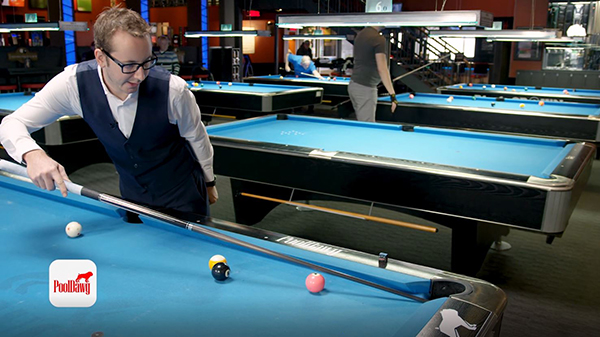
Another application of the projection mirror image system is one-rail kicks close to the rail. In this case, we want to hit the four ball, but we kind of missed the position. I’ve got to go one-rail here into the four, try to make it, and keep my hopes alive. Okay, so this is a pretty difficult shot. A lot of players would just guess it and I can’t criticize because I used to be one of them. However, we have a system that works perfectly. So the idea first is to try to find the center of the pocket there and find where I would need to hit that ball, the point of impact, in order to make it. So this is something right there.
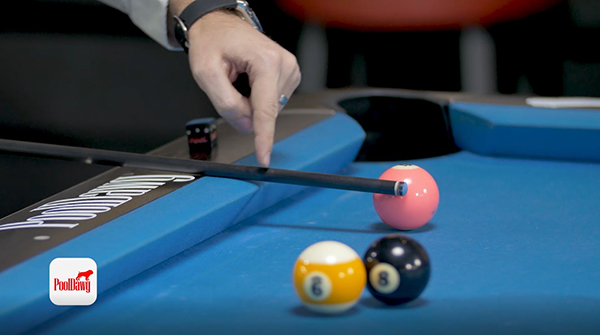
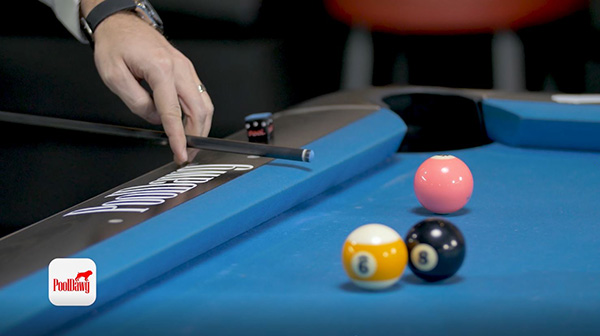
Second step. I'm going to go out there, put the tip of my cue right where the point of impact is and measure the distance from the point of impact into the edge of the rail right here. So I like to use two fingers like this, and the next step is transferring it in a straight line, edge of the railing to the tip and then something on the rail. As you can see here, it will basically be the right side, the little edge of the “R”. I'm going to mark this with my chalk so you guys can visualize that edge better.
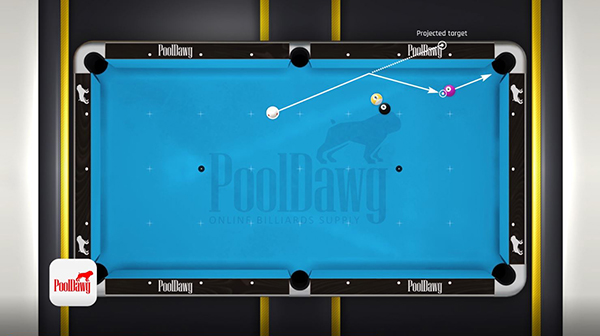
Okay, now this is a very efficient method, probably the most efficient application of the mirror system, because you do not have to aim at a point in space. This one, you're actually aiming onto the rail. So it's really easy to visualize, especially here, we got that sticker, but most of the time you have a diamond, or you have some piece of wood that you can identify. And it's sort of the reason why a lot of top pros are using it. You'll often see Shane Van Boening doing this as it is a very, very efficient method.
Now, I'm just going to shoot it and show you how to make the four, and not miss a kick shot any more in your life when they're like this. There you go, you have it, simple, efficient, accurate. There's really a not much better method when you're in a situation like that. And again, remember, even if my cue ball was here, same aiming point. So you can't go wrong with that method.
Important Factors & Considerations When Kicking and Banking
As promised, now let's study the factors that affect the bank or kick shot. We've set up a pretty obvious example here. So the cue ball into the one ball, one ball banks off this rail goes into the side pocket. If I hit that really well with a medium stroke, nothing fancy, it will go in simply because the angles are working the way they're supposed to work. So let's see that first. Okay, so exactly the way I wanted, perfect.
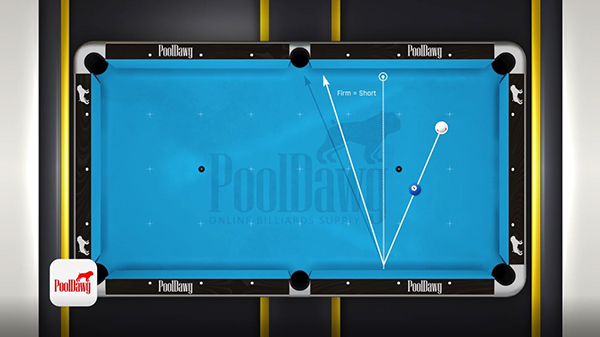
Now, if I were to hit the same shot, hard, we're going to make sure the ball's exactly the same spot. You're going to see that the two-ball will miss on this side. And that's simply because of the force; it's going to be the same exact aiming out there in the rail.
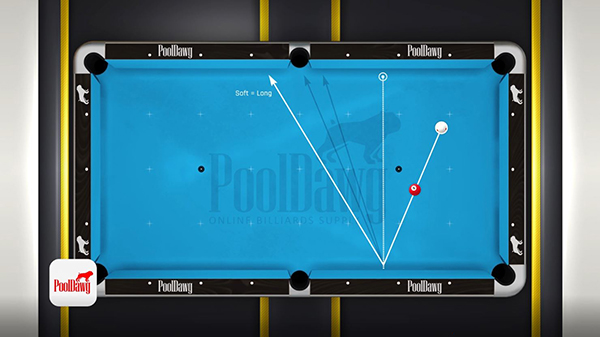
So as I said, it missed short. Now let's study one more. If we're to hit it soft again, same spot. Let's see what happens there. By now, you would guess if you hit it soft, you will hit that side of the pocket. And that's again, just the physics of the shot, same aiming. There we go. So that one went way wide. Okay, now that you know that, you know how to affect the angle of the bank.
If you had the same shot, but it was sort of blocked and you have to go a certain route, you can actually identify which force is the best- medium, hard, or soft. Now the other factors are the side spin you're going to apply to the ball, or English, and the equipment. And by equipment I mean the state of the balls and the felt. Here we got the same example we started with.
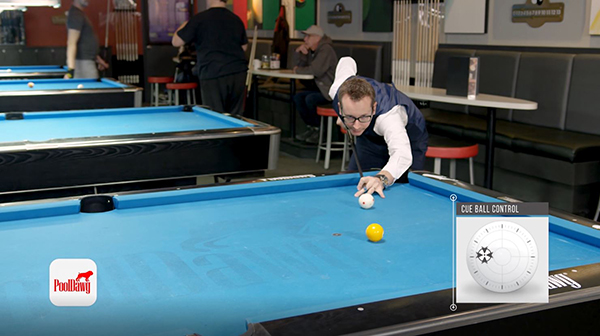
So the cue ball there, the one ball here. The idea is to bank it straight for the side pocket. Now, if I were to apply a lot less spin on my cue ball, but shoot it hard, it wouldn't really affect the banking angle. However, if I shoot that soft, I'm going to let you see what happens. Right here, same angle I would aim normally. Soft with spin is going to play even longer than if I hit it just simply hit it soft. The reason is because of the rotation. If I play left English, then my cue ball is going to give right English to my object ball. So if you reverse the spin, if I were to play right English on my cue ball, my object ball will go a little shorter. So again, it's something you got to consider. However, if you play a bank shot with higher speeds, spin will not be affecting you too much.
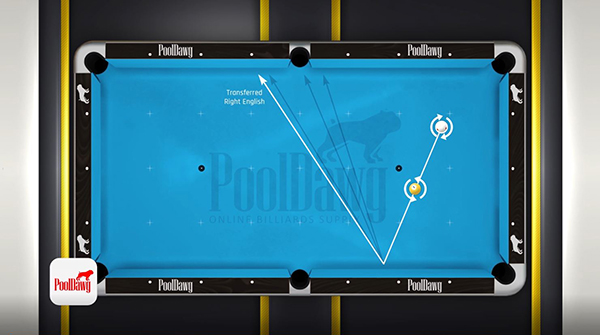
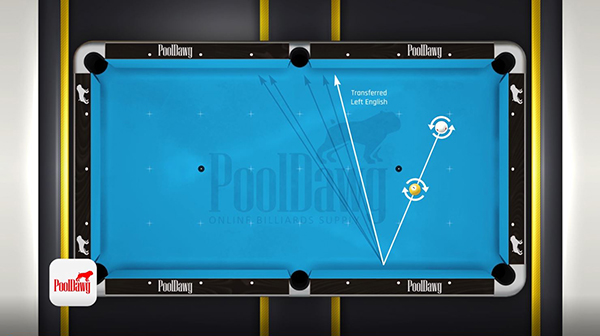
What affects you a lot more, in my opinion, is how the balls and felt are. So the balls, in this case here, they're pretty dirty. We haven't cleaned them since yesterday, they're quite dirty. So this will actually make the bank and kick shots play shorter. So this will naturally come rather here than there, and that's simply because the way the balls are. Humidity also affects you and that's outside today's training. So again, this is going to naturally make the bank shot play short. The next thing to consider is the state of the felt. In this case, this one has seen better days, but it's still pretty okay. So I would say, this has the tendency to already play short on this table simply because of that, but because of humidity, plus the ball, plus all the other conditions I mentioned, this table naturally plays shorter. And that's something you're going to have to identify by yourself.
When you're playing a match you're going to have to look at the ball, the equipment, see what's going on because if we take the reverse thing and if it was a very clean, pristine ball, brand new, on brand new felt, naturally it will play long and naturally you'll miss most of your bank shot long if you don't adjust for it.
So again, the system is great, it gives you a great idea to where to shoot first. But if you do not adjust with your instinct and with the condition you're playing on, you will still miss. So remember to always combine both and then you'll become a great banker and kicker.
This was one-rail advanced banking and kicking systems. I hope you guys enjoyed and learned something new. As usual, any questions please comment below. Let us know, we'll try our best to answers and remember for all your pool and billiard supplies, please go check out pooldawg.com, link's in the description. See you guys.
* Video transcript has been modified for the reader
- RELATED ARTICLES
- Easy One Rail Kicking System – By Mikey Verkruyse
- How To Make Kick and Bank Shots – By Florian Kohler
- Does Table Size Affect Kick and Bank Shots? – By Tom Simpson